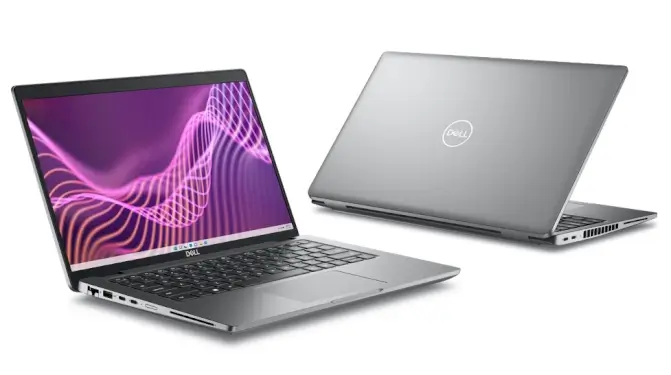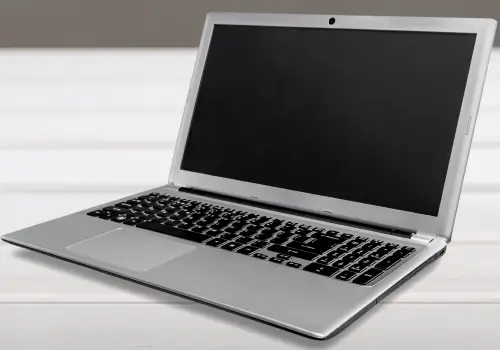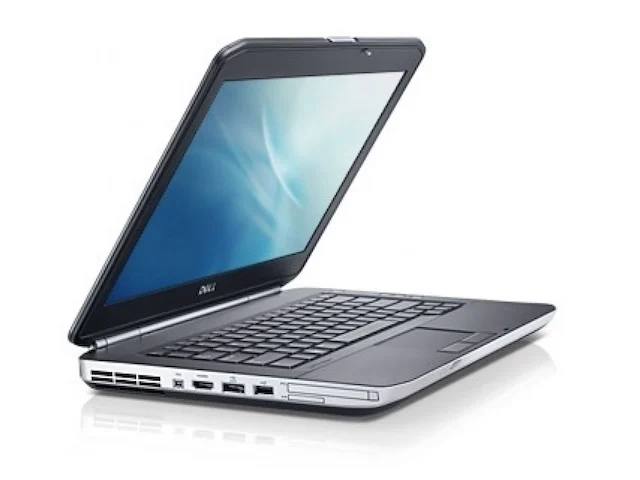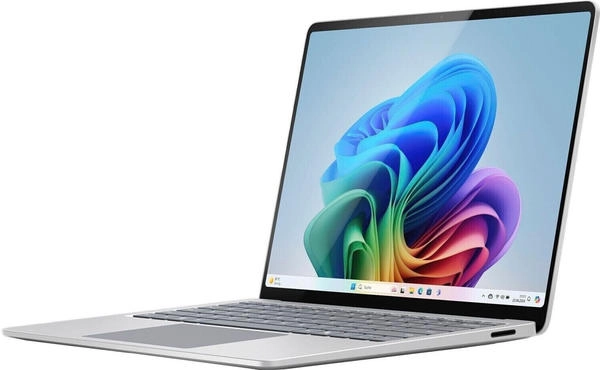Laptops have evolved far beyond just portable computers. They’re essential daily drivers for students, professionals, creative artists, gamers, and everyone in between. However, selecting the right laptop can be a daunting endeavor because of the countless models on the market—each boasting various processors, storage types, display sizes, and other attributes. In this comprehensive guide, we’ll break down the key considerations you need to explore when choosing a laptop, from determining your unique use case to balancing specs with budget constraints. By the end, you’ll have the knowledge required to confidently pick a laptop that aligns with your day-to-day needs and personal preferences.
1. Clarify Your Purpose and Usage
Before diving into technical details, start by asking: What do I plan to do with this laptop? The specs and design you need will be shaped by how you use the machine:
- Everyday Productivity: If you mainly handle web browsing, email, online shopping, social media, and video conferencing, a mid-tier processor with moderate RAM and integrated graphics will suffice. You’re not pushing the machine’s power limits, so a low-to-mid price range might be adequate.
- Professional Work: Business users often require a device for spreadsheets, presentations, multitasking across numerous apps, and possibly basic content creation. Reliability, battery life, and a comfortable keyboard become particularly important. You might want a robust but portable laptop that’s easy to carry between the office and home.
- Creative and Media: Graphic designers, video editors, and photographers need powerful hardware: high-resolution displays, discrete graphics cards, ample RAM, and high-speed storage to handle large media files. Color accuracy is also pivotal if you’re doing professional design or color-critical work.
- Gaming: Gamers require powerful processors and dedicated GPUs for rendering modern titles smoothly. High refresh rate screens (120Hz, 144Hz, or even higher) and efficient cooling systems help maintain smooth performance. Expect heavier builds and shorter battery life due to the hardware demands.
- Student or Travel-Focused: Portability, battery life, and durability may be paramount if you’re hauling the laptop between classes or traveling frequently. A lightweight ultrabook or 2-in-1 device may be ideal, though you’ll need to decide if specialized software (like CAD programs) demands more power.
- Specialized Tasks: Some fields have unique demands—data scientists might need powerful CPUs and lots of RAM, software developers might need a comfortable keyboard and a screen supporting multiple windows, etc. Define your top priority tasks before zeroing in on specs.
By outlining your usage, you can map out which specs are crucial—and avoid paying for features you’ll rarely use.

2. Choosing the Right Form Factor
a) Clamshell vs. 2-in-1
Traditional clamshell laptops offer a standard keyboard and a screen that opens to around 180 degrees. They’re typically lighter, simpler, and may offer better performance-per-dollar. Conversely, 2-in-1 (convertible) laptops have hinges allowing the screen to fold or detach, converting into a tablet-like experience. If you value touch or stylus input and want a device that can function as a tablet for sketching or reading, a 2-in-1 might appeal to you.
b) Display Size
Laptop displays range from small 11-inch models to expansive 17-inch screens. Consider:
- 13 to 14 inches: A popular sweet spot balancing portability and enough screen real estate for productivity.
- 15 inches: Offers a more spacious display, beneficial for multitasking or multimedia use. The laptop is still portable, though slightly heavier.
- 17 inches: Typically for gaming or heavy creative tasks where you want a desktop-like feel. Less portable due to size and weight.
Selecting the right size is often about your comfort with carrying it around versus your desire for a bigger working canvas.
c) Weight and Build Quality
Frequent travelers and students might prioritize an ultralight device (2–3 pounds) with a slim profile. Business or gaming laptops may weigh 4–6 pounds or more due to robust cooling systems, larger batteries, or dedicated graphics hardware. Also consider build materials—aluminum or magnesium frames can boost durability, while plastic chassis might be lighter on the wallet but less premium in feel.
3. Display Considerations
a) Resolution
A higher resolution such as Full HD (1920×1080), Quad HD (2560×1440), or 4K (3840×2160) results in crisper visuals. For mainstream productivity, 1080p is often sufficient. Creators, or those wanting the sharpest viewing experience, might aim for QHD or 4K. But remember, higher resolution often impacts battery life and can require more powerful components to drive graphics smoothly.
b) Panel Type
Common panel types include TN, IPS, and OLED.
- TN (Twisted Nematic): Budget-friendly with fast response times, but color reproduction and viewing angles are weaker.
- IPS (In-Plane Switching): Offers vibrant colors and wide viewing angles, making it a popular choice for general consumers.
- OLED (Organic LED): Delivers incredible contrast, deep blacks, and rich colors, ideal for media consumption and design. However, these can be pricier and have potential burn-in concerns if static images are displayed for long durations.
c) Refresh Rate and Brightness
Gamers or those doing high-speed video editing might appreciate a 120Hz or 144Hz refresh rate screen, giving smoother motion. For general productivity, 60Hz is standard. Also, check brightness levels in nits—a minimum of 250–300 nits is decent for indoor use, while 350 nits or higher might be more comfortable outdoors or in bright environments.
4. Performance: CPU, RAM, and Storage
a) Processor (CPU)
- Intel: Core i3 for basic tasks, Core i5 for a balance of performance and efficiency, Core i7 or i9 for power-hungry tasks like gaming, video editing, and 3D modeling. Newer generations (like 11th, 12th, or 13th gen) bring efficiency and speed improvements.
- AMD: Ryzen 3 for entry-level, Ryzen 5 for mainstream, Ryzen 7/9 for higher performance in gaming or professional workloads. AMD’s Ryzen chips have gained popularity for strong multi-core performance.
- Apple Silicon (M1, M2): If you’re considering a Mac, Apple’s custom chips blend impressive performance with excellent battery efficiency. They handle both general tasks and heavier creative workloads efficiently.
Choose a CPU that meets your workload demands without overspending on unneeded horsepower.
b) RAM
8GB of RAM is often the entry-level standard for comfortable multitasking in mainstream laptops. For heavier multitasking, gaming, or professional applications like video editing, 16GB or more is recommended. Enthusiasts or workstation users may even opt for 32GB or higher, ensuring smooth performance when handling large files or running virtual machines.
c) Storage Type and Capacity
SSD (Solid-State Drive) is essential for fast boot times and quick program launches. Common SSD capacities range from 256GB to 1TB. If you store lots of high-resolution media, gaming libraries, or large project files, a 512GB or 1TB SSD may be necessary. Some laptops combine a smaller SSD with a larger HDD for cost efficiency, but all-SSD setups generally provide more consistent performance. Also check if NVMe SSDs are used, offering faster read/write speeds than older SATA-based SSDs.

5. Graphics Capabilities
a) Integrated Graphics
Many laptops come with integrated GPUs within the CPU, like Intel Iris Xe or AMD Radeon integrated graphics. These handle everyday tasks, streaming, and light gaming or photo editing decently. For moderate usage, integrated graphics may be enough, saving cost and battery life.
b) Dedicated Graphics (Discrete GPUs)
NVIDIA GeForce (GTX or RTX series) or AMD Radeon dedicated graphics cards provide enhanced performance for 3D games, GPU-accelerated software (like Adobe Premiere or 3D modeling tools). If you intend to play modern AAA games or do heavy creative work, consider a dedicated GPU. Keep in mind discrete GPUs increase price, power consumption, and often the laptop’s weight.
6. Battery Life
A large battery may be crucial for students or travelers who need all-day usage away from outlets. Ultrabooks can often deliver 8–12 hours of moderate usage on one charge, while heavier gaming or workstation laptops might only sustain 3–6 hours. Real-world battery life also depends on screen brightness, background tasks, and usage patterns. Check user reviews for realistic estimates, as manufacturer claims can be optimistic.
7. Keyboard and Touchpad
a) Typing Comfort
Writers, students, and coders rely on a responsive, comfortable keyboard. Look for sufficient key travel (1–2 mm), tactile feedback, and proper spacing. Some brands (Lenovo ThinkPad, for instance) are famous for excellent laptop keyboards.
b) Backlighting
A backlit keyboard is useful for low-light conditions. Some laptops let you adjust brightness levels or even change colors (especially gaming laptops). If you frequently work at night or on planes, backlighting is a major plus.
c) Touchpad Quality
A responsive, accurate touchpad with multi-touch gesture support can significantly improve navigation. Look for Microsoft Precision Touchpads on Windows machines, or Apple’s trackpads if you’re opting for a Mac. Poor touchpad implementation can be frustrating.
8. Ports and Connectivity
a) USB Ports
- USB-A ports (Type-A) are still common for peripherals like mice, flash drives, etc.
- USB-C ports (Type-C) are more versatile. Some support Thunderbolt, enabling high-speed data transfer, display output, or charging. Consider how many USB ports you need for daily accessories.
b) HDMI, DisplayPort, or VGA
If you regularly connect to external monitors or projectors, ensure the laptop has an HDMI or USB-C with DisplayPort support. Adapters can solve missing ports, but if you prefer direct connections, check the laptop’s built-in options.
c) Audio Jack
Many people still rely on a 3.5mm headphone/microphone jack. While some ultrabooks have removed them, it’s nice to confirm if you want easy compatibility with wired headphones.
d) Ethernet
Thin laptops may omit a built-in Ethernet port, relying on Wi-Fi or a USB-C adapter. If stable wired connections are essential, check if an Ethernet port is present or if you’re comfortable using an adapter.

9. Operating System
a) Windows
Windows is extremely flexible, running the widest range of software and games. It’s available on laptops from budget to premium. If your profession or academic program uses Windows-only tools, this OS is likely your default choice.
b) macOS
Apple’s MacBooks are known for sleek design, strong performance, and robust integration with Apple’s ecosystem. They’re favored by creatives, developers, and productivity users. However, MacBooks typically come at a higher price, and upgradability is limited.
c) Chrome OS
Chromebooks use Google’s Chrome OS, focusing heavily on web-based apps and cloud storage. They’re cost-effective, lightweight, and excellent for basic productivity or casual browsing—perfect for students on a tight budget. However, offline functionality and specialized software may be limited compared to Windows/macOS.
d) Linux
Some enthusiasts prefer a Linux-based system for development work or customization. While few laptops come pre-installed with Linux, many Windows models can run Linux quite well. Just research driver compatibility to ensure your hardware functions fully under Linux.
10. Upgradability and Longevity
- RAM Upgrades: Some laptops let you add or swap RAM modules. Others have soldered memory that’s non-upgradeable. If you buy a device with limited or no expandability, consider getting enough RAM from the start.
- Storage Expansion: Check if there’s an extra M.2 or SATA slot to add a second drive. If not, you’ll be stuck with whatever capacity you initially choose.
- Serviceability: If you plan on using the laptop for several years, see if the battery is easily replaceable or if fans/dust can be cleaned to maintain performance.
Modern ultrabooks often compromise upgradability for thinness. Large gaming or business laptops might offer more flexible upgrade paths.
11. Durability and Design Aesthetics
Laptops differ widely in build quality—some use magnesium or aluminum chassis for sturdiness, while others rely on plastic shells. Business laptops (like Lenovo ThinkPad, Dell Latitude, HP EliteBook) often meet MIL-STD durability standards. Gamers might appreciate edgy, colorful aesthetics, while professionals might prefer sleek minimalism. Weigh your aesthetic taste alongside practicality—like spill-resistant keyboards or reinforced hinges.
12. Brand Reputation and Support
Reputation matters. Established brands like Dell, HP, Lenovo, Apple, Asus, Acer, MSI, and Razer often have distinct strengths:
- Apple: Premium build, excellent macOS integration, top-tier trackpads, but higher cost and limited port selection.
- Dell/Lenovo/HP: Wide product lines ranging from budget to premium business machines. Check their warranties and customer service.
- Asus/Acer: Known for value-oriented devices, though they also produce powerful gaming or high-end ultra books.
- MSI/Razer: Strong presence in gaming laptops, focusing on performance. Some models also target creators and professionals.
Examine user reviews and warranty policies. Good after-sales support can be invaluable if something goes wrong.

13. Budgeting and Price Ranges
Set a realistic budget based on your usage:
- Under $500: Chromebooks, low-end Windows machines. Decent for basic web and office tasks, but limited performance.
- $500–$1000: Mid-range Windows laptops with balanced performance, often 8GB RAM, decent SSD. Suitable for most office work, moderate creative tasks, or light gaming.
- $1000–$1500: Premium ultra books, mid-tier gaming rigs, or MacBook Air. Offers better build, faster CPUs, and possibly discrete GPUs.
- $1500+: High-end ultra books, gaming machines with powerful GPUs, Apple’s MacBook Pro, or specialized workstations. Superior performance, top-notch displays, premium materials.
Don’t forget to account for potential accessories (e.g., external monitor, docking station, external storage, warranty extensions).
14. Hands-On Testing and Reviews
a) Physical Inspection
If possible, visit a store to handle the laptops you’re considering. Evaluate keyboard feel, hinge strength, weight, and screen clarity. The intangible aspects like comfort and design matter for daily use.
b) Online Reviews and Benchmarks
Look for professional reviews that provide battery life measurements, performance benchmarks, and real-world usage observations. User feedback on forums or retailer sites can also reveal common issues (like thermal throttling, fan noise, or hinge problems).
c) Return Policies and Extended Warranties
Sometimes, a laptop seems promising but reveals quirks once you use it daily. A flexible return policy can protect you from buyer’s remorse. Also, if you’re investing heavily, an extended warranty covering accidental damage might be worthwhile.
15. Summary and Final Decision
When it comes to selecting the perfect laptop, it’s a matter of balancing form factor, performance requirements, and budget constraints:
- Define Usage: Are you using it for basic tasks, professional creative workloads, or intense gaming?
- Choose Form Factor: Decide on size, weight, clamshell vs. 2-in-1.
- Display Priorities: Aim for comfortable resolution, panel type, and brightness level.
- Performance Specs: Match CPU/GPU/RAM to your workload—do you need an entry-level or a powerhouse?
- Storage: Consider both type (SSD) and capacity (256GB, 512GB, 1TB).
- Battery Life: Varies heavily based on usage and design—select what suits your on-the-go needs.
- Keyboard/Touchpad: Comfort, backlighting, and responsiveness are essential if you type extensively.
- Ports and Connectivity: Enough USB, HDMI, or Thunderbolt ports for your accessories?
- OS Preference: Windows, macOS, or Chrome OS? Each has pros and cons.
- Budget: Set a range that aligns with your needs, factoring in hidden costs like possible upgrades or extended warranties.
The “perfect” laptop means something different to everyone—some want maximum portability, others want raw performance, still others value battery life above all. By prioritizing what truly matters to you, reading trusted reviews, and testing devices when possible, you can hone in on a device that will serve you well for years. Ultimately, selecting a laptop is an investment in productivity, creativity, and enjoyment—take time to weigh all factors and pick the one that feels just right.
